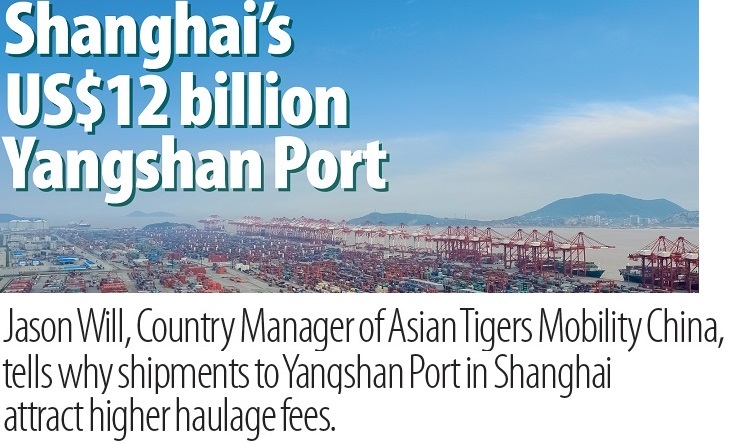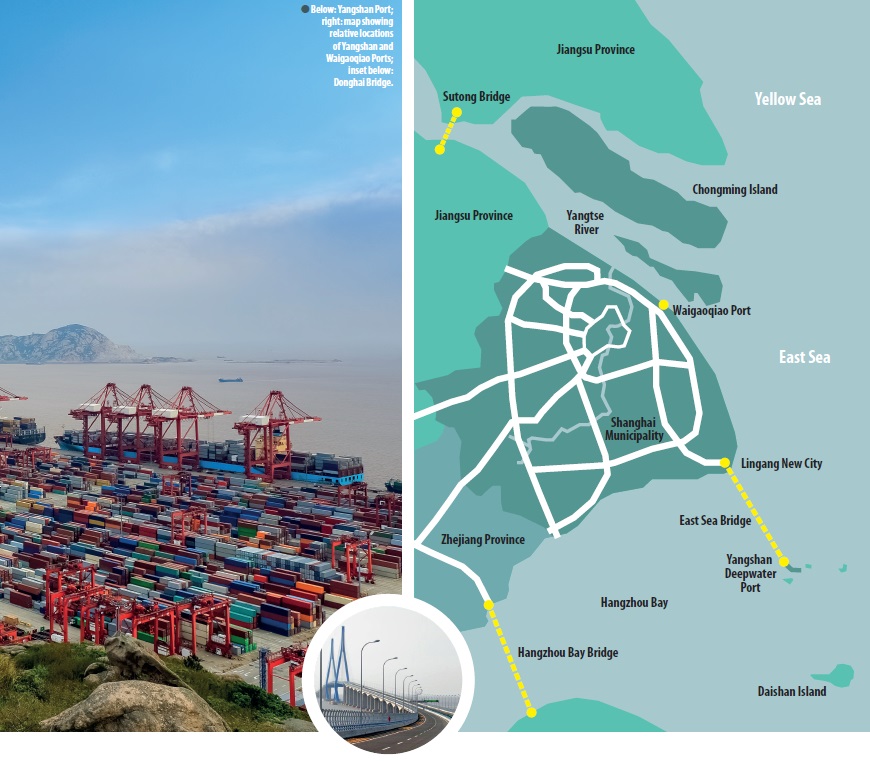Jason Will, Country Manager of Asian Tigers Mobility China, explains why shipments to Yangshan Port in Shanghai attract higher haulage fees.

Shanghai was a latecomer to the container business with its first container port only opening in 1983. During the 1990s, the Port of Shanghai was experiencing astronomical TEU traffic growth of between 20-40% annually (by comparison most of the major ports in the USA and Europe were experiencing annual growth of approximately 11%).
By 1998 it became very apparent to the Shanghai Port Authority that the existing ports along the Yangtze river would not be sufficient to handle the expected future TEU volume. Also, the existing ports along the Yangtze River were not deep enough to accommodate ever larger containers vessels that were being increasingly used by shipping companies.
 After considering their options, the decision was made to construct a deepwater port at Yangshan, a group of small islands located at the mouth of Hangzhou Bay. As the islands were over 32.5 kilometres/20 miles from the mainland, the port needed to rely on the construction of the Donghai Bridge, which opened on 1 December 2005 as the world’s longest sea bridge at that time (currently the world’s longest sea bridge is the recently opened Hong Kong – Zhuhai – Macau Bridge which is 55 kilometres/34 miles in length). The six-lane highway took 6,000 workers two and half years to build.
After considering their options, the decision was made to construct a deepwater port at Yangshan, a group of small islands located at the mouth of Hangzhou Bay. As the islands were over 32.5 kilometres/20 miles from the mainland, the port needed to rely on the construction of the Donghai Bridge, which opened on 1 December 2005 as the world’s longest sea bridge at that time (currently the world’s longest sea bridge is the recently opened Hong Kong – Zhuhai – Macau Bridge which is 55 kilometres/34 miles in length). The six-lane highway took 6,000 workers two and half years to build.
The first phase of Yangshan Port was completed in 2005 with a capacity for 2.2 million TEUs per annum. The 4th phase was completed in December 2017 and Yangshan Port now has a capacity of 6.3 million TEU per annum, making Shanghai ports total capacity of 40 million TEU’s per annum. According to the design plans, Yangshan Port will be completed in 2020 with 30 berths and a capacity of 20 million TEU’s per annum. It is projected that when completed, the total investment in the port will have reached US$12 billion.
Yangshan Port is fully automated and has 130 automated guide vehicles in daily operation.
All household goods shipments arriving in Shanghai (excluding diplomatic shipments) have to be taken to Shanghai customs bond store where all items are subjected to x-ray screening. The distance from the main Shanghai Port - Waigaoqiao Port to the Shanghai Customs bond store is approximately 18 kilometres / 11 miles, whereas the distance from Yangshan port to the customs bond store is approximately 120 kilomentres / 75 miles and can take 3-4 hours. It is for this reason that containers arriving at Yangshan Port will usually be subjected to additional transportation charges compared to containers arriving at Waigaoquiao port.
Photo: Left: Yangshan Port; right: map showing relative locations of Yangshan and Waigaoqiao Ports; inset below: Donghai Bridge.
Asian Tigers Mobility China